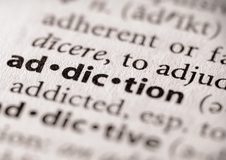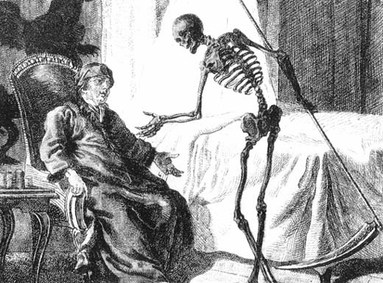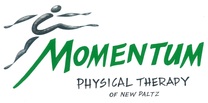|
A couple of weeks ago I came across two things that really hit home and gave me one of those "aha" moments. One was an article on a blog I follow and the other was someone's "testimonial" for her current fitness choice. The common theme between the article and testimonial is that movement rocks! So often we take for granted the ability to move without any limitations and do whatever we need or like to do. It usually takes an injury or physical limitation to remind us how awesome it is to move or a change/increase in activity level to remind ourselves what we've been missing. Either way, the conclusion from both of these scenarios is the same with regard to movement. As the old milk commercials used to say, it does the body (and mind) good. On top of that, I would add that it is addicting (in a good way). In the article, entitled "The Privilege of Movement", the author, Neghar Fonooni, reminds us that movement is a choice. In it she says "It's not an obligation or a begrudging requirement - it’s something to be eternally grateful for. Movement is a privilege, and one which we should honor daily...[by] making fitness enrich your life, not detract from it." Now fitness means a lot of different things to a lot of people as it should. That's the beauty of it since there is no one size fits all definition. At its core, however, I would argue that a major component of fitness means being able to move independently and satisfy your physical goals without any limitations rather than some number or image you are supposed to adhere to. Whether you accomplish that by going to a gym, heading to your local yoga studio or hiking with your dog, in some ways it does not really matter as long as it is something you like to do. The choices are endless. As long as it remains a positive element in your life and continues to enhance it then at some level you are probably addicted to movement without even knowing it. Now it's still important to mix things up and keep your body and mind engaged so that you don't get stuck in a rut and lose interest in making that choice to move altogether. We all know the outcomes when you choose not to keep moving and they are not pretty. The "testimonial" was a bit of a different flavor in that it perfectly exposed the importance of movement on the brain. I am not the first person to make the connection of fitness/movement with changes in the brain and I will certainly not be the last either. There are plenty of researchers who have beaten me to the punch but after reading the next two quotes, it is quite obvious and you won't have to bore yourself with dry scientific publications. It began with, "I looked in the mirror and didn't know who that was. I was tired, weak, sad, embarrassed of my body and just felt plain old ugly." After a recent change in her activity level and choosing to make movement and fitness a priority, this same person now says, "I feel strong! I have tons of energy! I feel positive about myself and what I can do, in and out of the gym. My kids think of their mom as strong! I am happy." There has been a total transformation in her brain and mindset thanks to the power of movement and fitness. It is quite clear from this example that physical fitness and mental health go hand in hand. And those last three words are awesome! Happiness is pretty easy to get addicted to! I could keep adding more anecdotes, articles and research studies reiterating the same ideas but that would be very boring. Why not be an experiment of one and make the choice to find the right kind of addiction to enrich your life? You can also check out Ben Bruno for the article that inspired this post as well as find great information on training and programming for your movement, fitness (and brain) goals. Knowledge = Power; Share The Power:
0 Comments
-Train Smarter, Not Harder-  I would rather not admit how many times I have violated this principle but let's just say too many. I am at a crossroads again which inspired me to put pen to paper (or fingertips to keys) in hopes that someone can learn from my mistakes. For me, it all began a couple of weeks ago. Up until then I was in the best running condition at this time of year for the first time in a while. I had and still have high hopes for this season of racing but I've recently developed consistent lower shin pain seemingly out of nowhere. There have been no drastic changes in my training routines that would explain an injury such as this. It was also alarming to be fine one day and then experience consistent pain during the next run without an event to point to as the culprit. Now it should be noted the pain I was dealing with was not severe in any way but having a consistent sensation of pain and discomfort on every step was concerning. I have finally learned that it would be better to pay attention to my situation now instead of putting it off or ignoring it like I've done before. That's lesson #1 if you are keeping track: Take care of things early on instead of ignoring them or allowing things to fester and get worse. Having dealt with other injuries in the past I have also learned that continuing to run probably wasn't going to help the situation. Chances are it was only going to make things worse so as difficult as it was I decided to shut things down until I could resolve this particular issue. That's lesson #2: Sometimes you just need to stop as much as you don't want to. Even if there is a race or event coming up, it's better to give your body a chance to heal, recover and figure out the problem instead of just pushing through. I am not an elite athlete and I'm guessing anyone reading this isn't either so it is unlikely there is anything truly on the line that is worth risking further injury and delaying a return to your desired activity. As frustrating as it is, having the patience to take time off from running (even with a couple of events in the next month) and get to the root of the problem will pay dividends for the rest of my season and if all goes well, for the long term too. That's lesson #3: Be patient. Life is much better when you can live to fight another day rather than push through and be sidelined for much longer. Being "tough" and training harder ends up backfiring more often than not. Thank goodness I have the skills to figure things out and treat myself in most cases. Having finally learned these lessons the hard way, I should be able to solve my particular injury in the short term so that I am ready for the rest of the season. There is a time and place to train hard(er) and this is not that time. I am finally allowing my brain to help me train smarter which will help me get back on the trails and racing as soon as possible. So I encourage you to learn from my mistakes when training for whatever your endeavor may be. When healthy and especially when dealing with injury, take full advantage of those three pounds of tissue between your ears and train smarter, not harder. Knowledge = Power; Share the Power: If you read Parts I, II, and III, this topic got into some heavy material which is important to be aware of but there is also some good news out there which was touched upon in each post. That good news can really be summarized in one word: MOVE. Something I find myself sharing with my clients is a very simple analogy I wish I could take credit for but Sir Isaac Newton beat me to it with his first law of motion: A body at rest stays at rest and a body in motion stays in motion. Granted he was talking about physical objects but it is amazing how much this relates to the dynamic organisms human beings are and their overall health, well being and mobility. And based on the current body of research, if you move more, you tend to live longer. That is pretty darn good news! Avoiding sitting for prolonged periods of time and/or adding movement into your daily routine can be accomplished in any number of ways. You are truly only limited by your imagination. It could be simple things like taking 1-2 minute walking breaks each hour at work, taking the stairs instead of the elevator/escalator, parking farther from your destination, etc. Each of these ideas often seems trivial in isolation but it is amazing what happens cumulatively over weeks, months and years, and they can become normal routines you don't even have to actively think to do. (Your car will probably have less dings in it too from car doors and grocery carts...you're welcome.) The more challenging change is actually engaging in more sustained activities instead of sitting because that involves time and we all know time is precious. However, if you take an honest look at your schedule you can probably find at least 30 minutes during the day to engage in some type of activity. You may have to tweak your schedule and routines a bit at first but again, sticking with good habits becomes a new routine. Instead of passively watching television, actively watch your favorite shows by incorporating some simple bodyweight exercises (pushups, squats, lunges, etc.), stretching or matwork style routines (Pilates), or if you really want to get your heart rate up, shadowboxing (one of my favorites). Or better yet, trade an hour of television altogether for an activity you like to do. The easiest thing you can do and a great starting point is highlighted in this short video which addresses a few different things but relates very well to this topic. The moral of this story is not to cause a panic or to suggest strict rules to live by because that would be unnecessarily extreme. Instead it is meant to be food for thought so that you can take advantage of this information and incorporate it into your life as you see fit. You know your schedule, you know your life and how you want to live it. Hopefully this information can help you optimize the ways in which you live your life so that you can be a happy, healthy and mobile person for a long time coming.
Thanks for reading! If you found this post to be helpful please share! In this latest installment, I will summarize a couple of studies that address sitting time and associated health risks. You can catch up on Parts I & II if you missed those the first time around here and here. At this point there is a growing body of literature studying different outcomes, disease progressions and chronic conditions as they relate to sitting and they all have the same conclusions. Prolonged sitting essentially has a dose response outcome: the more sitting you do, the more likely you are to suffer from chronic health issues and a shortened life span. In many studies, these results are independent of other factors like diet and activity level which is even more concerning. Even if you get your 5 mile run in everyday but you sit for 8 hours, it turns out there is still an increased risk for chronic health issues. That being said, things like diet, exercise and sleep have profoundly positive effects in other ways so be sure to keep those good habits in your life. Wilmot et al performed an analysis and summary of 18 moderate to high quality studies in 2012 all related to sedentary lifestyle and risk of diabetes, cardiovascular disease, and cardiovascular and all-cause mortality. (1) In order to avoid discrepancies in analysis because of differing methods in each study, they compared highest sedentary times to lowest. It is possible that this could skew their results by using the extremes but even taking that into consideration their results are striking: 112% increased risk of type II diabetes 147% increased risk of cardiovascular disease 90% increased risk of death by cardiovascular disease 49% increased risk of all-cause mortality In 2010, Alpa et al looked at leisure time spent sitting and all-cause mortality rate. (2) They compared sitting more than 6 hours vs. sitting less than 3 hours during leisure time and did not include occupational sitting time over the course of 14 years for over 120,000 people participating in the study. Independent of physical activity women who sat for more than 6 hours had a 40% higher death rate than those who sat for less than 3 hours and men had an almost 20% higher death rate. When combining sitting time with low physical activity, those numbers jump to 94% and 48% respectively! Now you can imagine what happens if you add sitting time at work to these leisure numbers. Conversely, those that sat less than 3 hours for leisure and were physically active had lower death rates. I could continue to highlight other studies like the amount of time watching television and cardiovascular disease or the risk of obesity and prolonged sitting but I think it is quite clear already what the overall conclusion is. Whether someone has to sit for work or chooses to sit for many hours during his/her leisure time (or both), that alone is a risk factor for his/her health and well being. By pure coincidence, I came across an infographic basically addressing the same issues. It is a bit sensationalized but even so it sheds some light on this important issue. You can check it out here. Wishing you many more healthy years before Mr. Reaper knocks on your door! Then again, you may have some knocking on your door with much more reasonable requests of tricks or treats in the near future!
References: 1. E. G. Wilmot, C. L. Edwardson, F. A. Achana, M. J. Davies, T. Gorely, L. J. Gray, K. Khunti, T. Yates, S. J. H. Biddle. Sedentary time in adults and the association with diabetes, cardiovascular disease and death: systematic review and meta-analysis. Diabetologia. November 2012, Volume 55, Issue 11, pp 2895-2905. 2. Alpa V. Patel, Leslie Bernstein, Anusila Deka, Heather Spencer Feigelson, Peter T. Campbell, Susan M. Gapstur, Graham A. Colditz, Michael J. Thun. Leisure Time Spent Sitting in Relation to Total Mortality in a Prospective Cohort of US Adults. American Journal of Epidemiology. Volume 172, Issue 4, pp. 419-429. If you found this to be helpful, please share! |
Dr. Greg Cecere
Your personal physical therapist, movement educator and knowledge dispenser. Newsletter Sign Up
Enter your name and email to get Momentum PT's Movement Manual delivered straight to your inbox! It's your free monthly newsletter and guide to moving better, feeling better and living better! Archives
April 2017
Categories
All
Disclaimer:
The contents of this blog is meant for educational purposes only. Momentum Physical Therapy of New Paltz and Dr. Greg Cecere are not responsible for any harm or injury that may occur due to any information on this blog as it is by no means a substitute for a thorough evaluation by a medical professional. |
|
Momentum Physical Therapy of New Paltz, PLLC. Copyright © 2013-2024. All Rights Reserved.
Disclaimer: The contents of this site is meant for educational purposes only and utilization of any of the material is a personal choice. Momentum Physical Therapy of New Paltz and Dr. Greg Cecere are not responsible for any harm or injury that may occur due to those choices. This site is by no means a substitute for a thorough evaluation and guidance by a licensed medical professional.
|


 RSS Feed
RSS Feed
